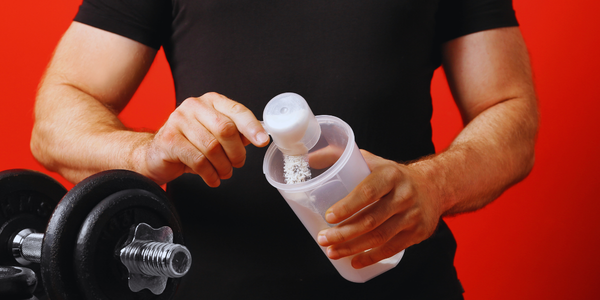Sick of the same fitness advice? Try these science-backed routines for real results
Stop wasting time: Try these proven workouts.

Sick of the same fitness advice recycled on social media? You’re not alone. Men today are bombarded with trendy workouts and quick fixes that rarely deliver.
The good news: research has finally caught up with the hype. Science-backed fitness routines—programs grounded in data, physiology, and performance outcomes—are reshaping how men train, recover, and achieve results
Strength Training: Building the Foundation
Strength training remains the #1 fitness trend for men worldwide. Backed by decades of research, it not only builds muscle and boosts testosterone but also improves bone density, reduces the risk of injury, and enhances metabolic health.

Science highlights:
- Progressive overload with compound lifts (squats, deadlifts, presses) increases muscle size and strength.
- A systematic review (2021) found that strength training enhances power, agility, and overall performance.
- 59% growth in strength training reservations in the last year confirms men are making it a priority.
Practical tip: Aim for 3–4 weekly sessions, focusing on multi-joint lifts. Track your loads and add 2.5–5 lbs each week for sustainable progression.
Functional Training: Training for Longevity
Gone are the days when men only chased aesthetics. Functional training—movements that mimic daily life and athletic demands—is now ranked among the top 10 global fitness trends.

Benefits:
- Improves speed, balance, agility, and joint health.
- Enhances mobility, preventing the stiffness common with aging.
- Builds usable strength—so you’re not just strong in the gym, but in everyday life.
Expert insight: “Mobility, flexibility, and endurance now play a crucial role—discovering how capable the body can be when trained in all aspects of movement,” says Joan Rogers, Head of Studio Programming at Pop Life.
Practical tip: Incorporate plyometrics, bodyweight drills, and mobility work into your weekly schedule. Think lunges with rotation, kettlebell swings, and resistance band work.
HIIT Evolution: Maximizing Time & Results
High-Intensity Interval Training (HIIT) is more than a calorie-burning hack—it’s science at work.
Research shows HIIT improves cardiovascular health, boosts metabolism for hours post-workout, and enhances endurance in just 4–6 weeks.
Data points:
- 30% growth in digital HIIT tools since 2021.
- HIIT maintains its spot as a global top 10 trend.
- Participants report significant muscle tone improvements in as little as one month.
Practical tip: Start with 20 minutes, 3 times per week, alternating 30–40 seconds of max effort with 60–90 seconds of active recovery.
The Often-Ignored Factor: Recovery
Science confirms that growth doesn’t happen in the gym—it happens during recovery. Low-impact training, mobility sessions, and sleep tracking are now integral to evidence-based routines.
Stats:
- 70% of fitness enthusiasts plan to increase recovery practices in 2025.
- Post-workout recovery methods (stretching, cold exposure, sleep optimization) lead to a 25% reduction in injury risk.
Practical tip: Treat recovery as a workout. Prioritize 7–9 hours of sleep, active recovery days, and periodic deload weeks.
Lifestyle & Tech: The Rise of AI Fitness
AI-powered personal training is reshaping men’s fitness. Apps and wearables now track biometrics, optimize workouts, and keep you accountable.
Impact:
- AI-guided training improves workout adherence by 71%.
- Users achieve 40% higher fitness goal completion.
Wearables + data-driven apps are no longer optional—they’re essential tools for men serious about long-term success.
Case Studies: Proof in Action
- Youth Strength Development – A 12-year-old athlete improved squat strength by 33 lbs and vertical jump by 3 inches in 12 weeks.
- Powerlifting at 55 – Julie, a physical therapist, overcame osteoarthritis, rebuilt muscle mass, and broke records after combining powerlifting with smart nutrition.
- HIIT Transformation – Leigh Ortiz lost 100 lbs and improved confidence, endurance, and muscle tone through a 15-month HIIT program
Practical Strategy: 3-Step Weekly Plan
- Strength Training (3x/week): Compound lifts + accessory work.
- Functional Training (2x/week): Plyometrics, mobility circuits, and balance drills.
- HIIT (2x/week): Short, intense bursts with full-body movements.
- Recovery: At least 2 active rest days with stretching, yoga, or light walking.
Trends & Expert Insights
“The exercise professional will need to be innovative in their approach to using technology while increasing client adherence and autonomy,” says A’Naja Newsome, PhD.
The convergence of tech, recovery science, and evidence-based programming points to a future where men achieve more with less wasted effort.
FAQs
Q1: How fast can I see results with science-based training?
Most men notice improved strength and stamina in 4–6 weeks of consistent training.
Q2: Is HIIT better than steady cardio?
HIIT is more time-efficient and boosts metabolism, but steady cardio supports endurance. A mix works best.
Q3: Do I need supplements for results?
Supplements can help, but consistency in training, nutrition, and sleep matters more.
Q4: How many rest days should I take?
At least 2 active recovery days per week to avoid overtraining.
Q5: Can men over 40 benefit from strength training?
Yes—strength training improves testosterone, bone density, and muscle retention, making it vital for aging men.
Conclusion
The message is clear: evidence beats trends. Strength training, functional movement, and HIIT, backed by smart recovery and tech, deliver measurable, lasting results for men. Whether your goal is muscle, performance, or longevity, these routines are proven to work.
ActiveMan — Make Your Move
The Modern Guide to Men’s Health, Fitness & Lifestyle.





